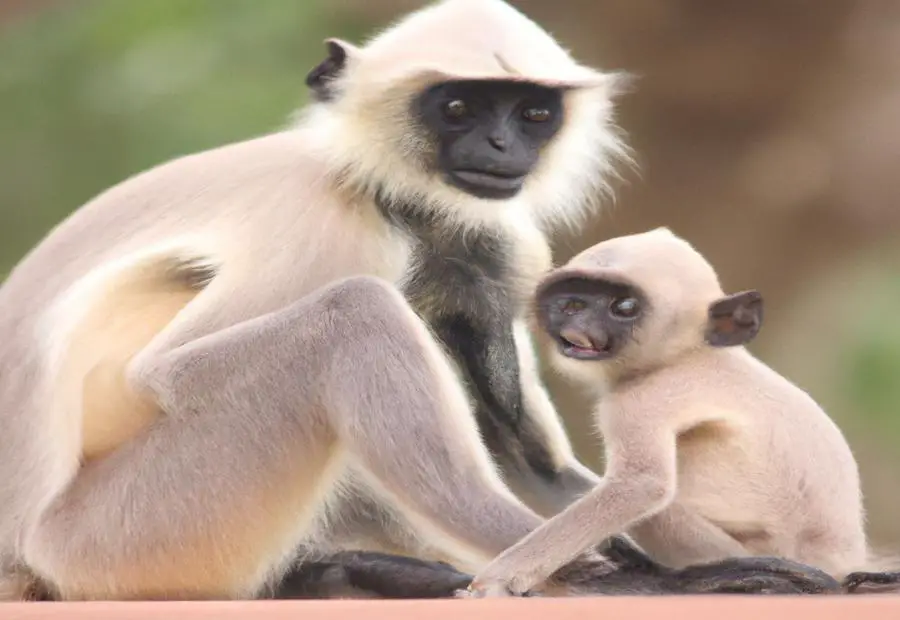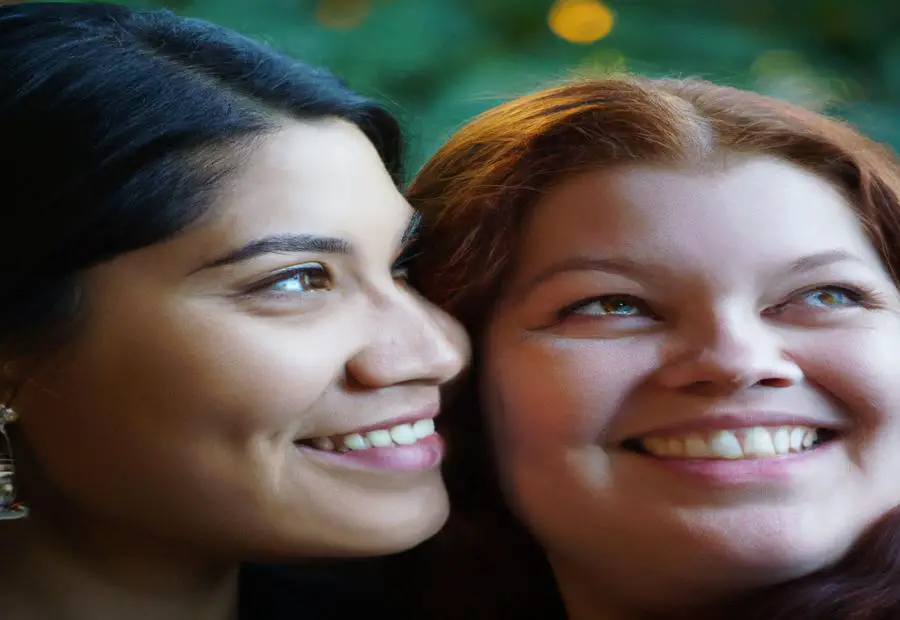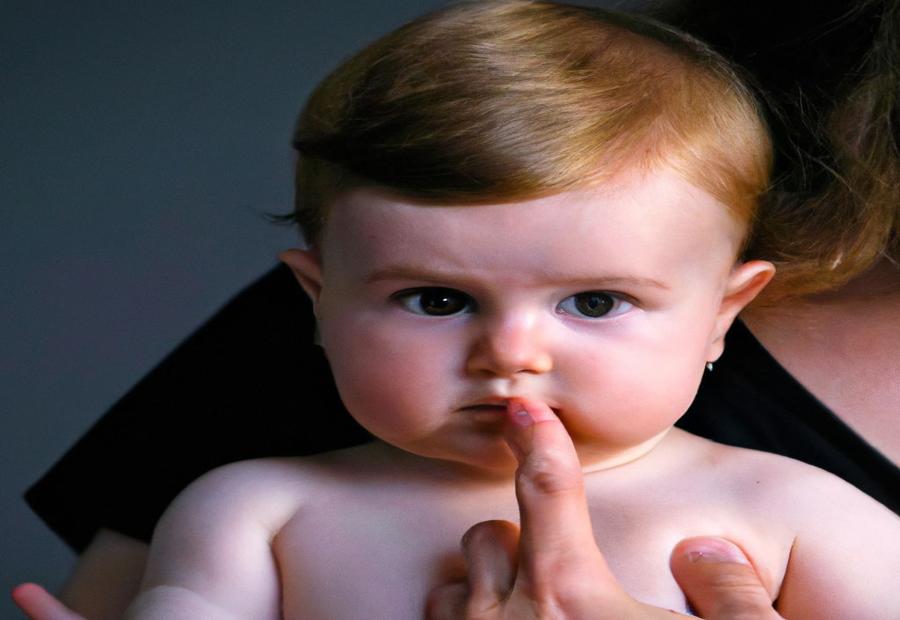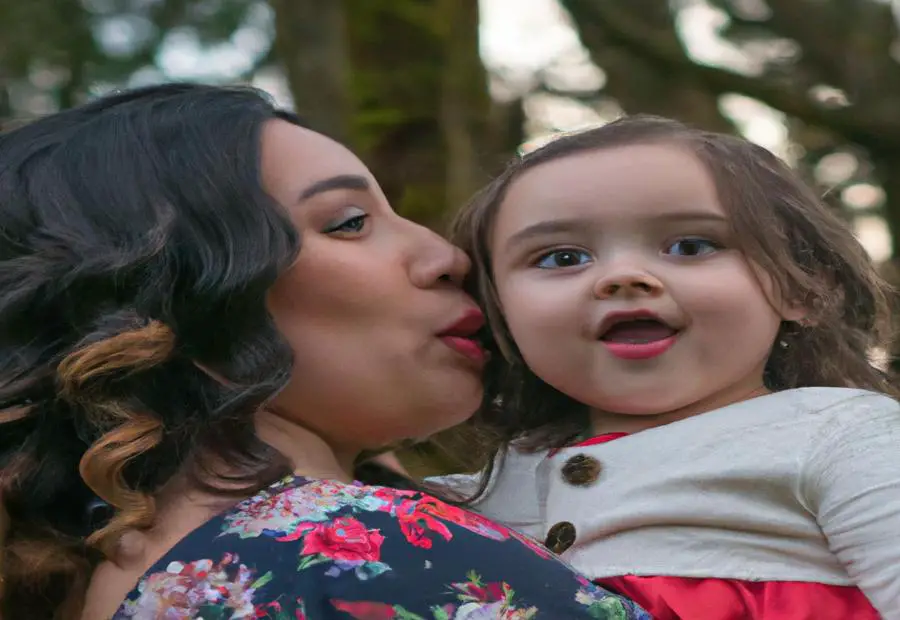Last Updated on July 25, 2023 by Francis
.jpg)
When Your Girl Turns into a Mini You
Having a daughter who resembles you in various aspects can be a remarkable experience. From physical features to personality traits, witnessing your girl transform into a “mini you” can evoke a sense of awe and wonder. This article explores the concept of “Mini Me’s” and delves into the factors contributing to this resemblance. It also examines the physical resemblance, personality traits, and emotional bond that often exist between a parent and their “mini me.” The article discusses the importance of nurturing their individuality and the challenges and rewards that come along with having a daughter who closely resembles you. Parenting a “mini you” involves supporting their unique talents while also recognizing the need for boundaries and allowing space for growth and exploration.
TABLE
Contents
Key takeaway:
- Understanding Mini Me’s: “Mini You” refers to the phenomenon when your daughter starts resembling you both physically and in terms of personality traits.
- Factors Contributing to Mini Me’s: Genetic factors and environmental influences play a role in shaping the resemblance between parent and child.
- Physical Resemblance: Seeing yourself in your daughter can be seen through similar facial features and matching body characteristics.
- Personality Traits: Mini Me’s often exhibit shared interests, hobbies, and similar behavior and attitudes as their parent.
- Emotional Bond: There is a special connection between Mini Me’s and their parents, creating a strong emotional bond.
- Parenting Mini Me’s: Nurturing and encouraging their individuality involves allowing space for growth and exploration, as well as recognizing and supporting their unique talents.
- Challenges and Rewards: While maintaining boundaries can be a challenge, having a mini version of yourself brings the reward of a strong bond and understanding between parent and child.
Understanding Mini Me’s: What Does it Mean?

Photo Credits: Meaning-Of-Number.Com by Juan Campbell
Understanding mini me’s is about comprehending children who resemble their parents in appearance, behavior, or personality. It is not just a coincidence, but a result of genetics and environmental factors. Children inherit physical traits like eye color, facial features, and hair type from their parents. They may also imitate their parents’ mannerisms, gestures, and ways of speaking, further contributing to their mini-me status.
The concept of mini me’s reflects a strong bond and influence between parents and children. Parents shape their children’s identities by passing down genetic traits, values, beliefs, and cultural practices. When observing mini me’s, it’s important to recognize the uniqueness of each individual and understand that while they may share similarities with their parents, they also have their own distinct qualities.
Understanding mini me’s deepens the parent-child connection and fosters a sense of belonging. Children often find comfort and security in being like their parents. It’s crucial to embrace and celebrate these similarities and differences, allowing children to develop their own personalities and identities while also acknowledging their connection to their parents.
What is Meant by “Mini You”?
The term “Mini You” is used to describe a child, especially a daughter, who bears a strong resemblance to one or both of their parents, both physically and personality-wise. This phenomenon occurs when there is a noticeable similarity between the child and their parent’s physical features and traits. These physical features can include facial characteristics like eyes, nose, or smile, as well as body attributes such as body shape or height.
“Mini You” also extends to personality traits and interests. It is not uncommon for a child to share hobbies, interests, behaviors, and attitudes with their parent. This connection allows for a deeper bond and understanding between the parent and child.
A real-life example that embodies the concept of “Mini You” is the story of Sarah and her daughter, Emily. Sarah discovered that Emily not only looked strikingly similar to her but also shared her passion for art and creativity. Sarah, an accomplished artist herself, found immense joy in seeing her love for art reflected in her daughter. They often spend quality time engaging in painting and exploring different art forms, further strengthening their bond as “Mini You.”
This concept of “Mini You” can create a unique and beautiful experience for both parents and children. It enables them to connect on a profound level and foster a special bond that surpasses genetics. Witnessing parts of oneself mirrored in a child and observing their growth and individuality alongside shared traits is truly a joyful experience.
Factors Contributing to Mini Me’s

Photo Credits: Meaning-Of-Number.Com by Scott Rivera
Discover the fascinating factors that contribute to the creation of “Mini Me’s.” Delve into the age-old debate of genetics versus environment and unravel the intricate interplay between nature and nurture. Explore how these two forces shape the unique characteristics, traits, and quirks that make our little ones resemble us. Get ready to dive into the fascinating world of genetics and the powerful influence of the environment on our mini versions.
Genetics: Nature vs. Nurture
Genetics shape individuals, and the ongoing nature versus nurture debate has long been of interest. In the case of “mini me’s,” the resemblance between parent and child can often be attributed to the influence of genetics. Genes that are passed down from parents play a significant role in determining physical characteristics, including facial features and body type. Furthermore, specific genes inherited from parents strongly influence certain traits, such as hair and eye color.
In addition to physical traits, genetics also contribute to personality traits. It has been found that interests, hobbies, and preferences can have genetic roots. While external factors and the environment play a vital role in shaping behavior and attitudes, genetic predisposition provides a foundation for the development of certain traits.
However, it is important to note that genetics alone do not solely determine an individual’s development. The interplay between nature and nurture is incredibly complex. Environmental factors and upbringing also contribute significantly to a child’s development. The specific contributions of genetics and the environment are challenging to isolate and understand fully.
To truly understand the development of “mini me’s,” it is crucial to comprehend the interplay between genetics and the environment. By acknowledging the role of genetics and nurturing a child’s individuality, parents can provide support and guidance in embracing their unique traits. This approach fosters personal growth and exploration, allowing children to develop and thrive in their own distinct way.
Environmental Influence
Environmental influence plays a significant role in shaping the development of “mini me’s”. The environment has a profound impact on the behavior, attitudes, and interests of children. Children tend to imitate the behaviors they see in their surroundings, especially those of their parents, which results in a strong resemblance.
For instance, growing up in a household that promotes outdoor activities fosters a love for nature and adventure in children. Similarly, when parents stress the importance of education, it leads to an inclination towards academics in children. Moreover, parents’ values, beliefs, and lifestyle choices also affect the development of their children.
Positive and nurturing environments contribute to building confidence and well-adjusted individuals. Conversely, negative or unhealthy environments can have detrimental effects, leading to behavioral issues or emotional challenges. It is crucial for parents to create a supportive and nurturing environment that encourages individuality and the pursuit of interests.
Through providing a positive and enriching environment, parents can help cultivate their children’s talents and assist them in reaching their full potential. Therefore, the environmental influence plays a vital role in shaping “mini me’s” and has a profound impact on their overall development.
Physical Resemblance: Seeing Yourself in Your Daughter

Photo Credits: Meaning-Of-Number.Com by Joseph Hill
When your daughter starts to resemble you physically, it’s a moment of wonder and connection. In this section, we’ll explore the fascinating aspects of physical resemblance between mothers and daughters. From similar facial features that mirror each other’s expressions to the shared body characteristics that speak volumes of shared genetics, we dive into the ways in which we see ourselves in our daughters. Get ready to be amazed by the undeniable resemblances that bind generations together.
Similar Facial Features
Similar facial features visually remind us of the genetic connection between parents and children.
Distinctive facial structures, like high cheekbones or a specific nose shape, can be inherited.
Shared eye color or eyebrow shape can create a strong resemblance.
Facial expressions and mannerisms can also be similar, enhancing the resemblance between parents and children.
Embrace and celebrate these shared characteristics of similar facial features. They can be a source of bonding and connection. But also recognize and appreciate each individual’s unique qualities and identities.
Encourage your child’s development of their own style and personality, while acknowledging the special connection you share.
Matching Body Characteristics
Matching Body Characteristics
Mini me’s often resemble their parents in facial features and body characteristics. Facial similarities can include the shape of the face, nose structure, and eye placement. These resemblances indicate the strong parent-child relationship.
In addition to facial features, mini me’s may also have similar body characteristics as their parents. This includes body shape, height, hair color, and eye color. These matching body characteristics further reinforce the physical resemblance.
It’s important to note that while these resemblances are common, they are not always present. Each individual is unique and may inherit different traits. Therefore, a parent and child can have different body characteristics despite a physical resemblance in other areas.
Studies have shown that having matching body characteristics is more likely with a strong genetic influence. However, environmental factors can also impact physical traits.
Personality Traits: When the Apple Doesn’t Fall Far From the Tree

Photo Credits: Meaning-Of-Number.Com by Terry Sanchez
When it comes to personality traits, the apple doesn’t fall far from the tree. We’re diving into the fascinating world of shared interests, hobbies, behaviors, and attitudes. Get ready to discover how our loved ones often mirror us in unexpected ways, creating a bond through mutual passions and a shared outlook on life. Let’s explore the intriguing dynamics of these connections and what they reveal about the close relationship between us and our loved ones.
Shared interests and hobbies play a crucial role in fostering a strong bond between a parent and their child. There are various activities that can help enhance this connection:
– Exploring the great outdoors: Embarking on nature hikes, going on camping trips, or even fishing together provides an opportunity for parents and their children to develop a shared love for nature and create cherished memories.
– Engaging in sports activities: Playing soccer, basketball, or tennis as a team promotes teamwork, discipline, and a healthy sense of competition. It allows parents and their children to connect through their mutual passion for sports.
– Unleashing creativity through art and crafts: Painting, drawing, or indulging in do-it-yourself crafts encourages imaginative expression. It serves as a delightful means for parents and their children to connect while pursuing their shared interest in the arts.
– Embracing the joy of reading and storytelling: Cultivating a shared love for literature lays a solid foundation for parent-child relationships. Reading books together, discussing stories, and even co-writing their own tales can ignite a lifelong passion for reading.
– Harmonizing through music and dance: Playing musical instruments, singing, or dancing together brings immense happiness and allows for self-expression. It presents parents and their children with opportunities to bond over their mutual adoration for music and movement.
By actively participating in shared interests and hobbies, parents can strengthen their bond with their children and create pathways for personal growth, learning, and mutual understanding.
Similar Behavior and Attitudes
Similar Behavior and Attitudes
Children often inherit certain characteristics from their parents, leading to intriguing similarities in behavior and attitudes. Here are some examples:
| Parent’s Behavior/Attitude | Child’s Behavior/Attitude |
| Enjoys reading and loves learning | Shows strong interest in books and continuous curiosity |
| Has go-getter attitude and is driven | Demonstrates ambition and desire for success |
| Values honesty and integrity | Displays honesty and strong moral compass |
| Strives for perfection in everything | Tends to be detail-oriented and sets high standards |
These examples highlight shared behavior and attitudes between parents and their children. It is important to recognize that not all children will have identical traits to their parents, as each individual is unique. However, when similarities do arise, they can create a special connection between parent and child.
Emotional Bond: The Special Connection Between Mini Me’s
The emotional bond between mini me’s is a special connection that brings joy and fulfillment. It is formed through shared experiences, unconditional love, and a deep understanding of each other.
This bond is strengthened by participating in activities together. Whether playing games, going on adventures, or spending quality time, these moments create lasting memories and deepen the connection.
The connection between mini me’s enhances well-being and cultivates a sense of belonging and identity. It boosts emotional growth by providing a safe and nurturing environment for self-expression and growth.
In this relationship, both parties contribute to the bond. Communication plays a vital role, fostering trust, understanding, and empathy. It’s important to listen and validate each other’s feelings and emotions.
Having a strong support system is crucial for the emotional bond between mini me’s. Family, friends, and loved ones provide guidance and encouragement, creating a positive environment for growth.
Parenting Mini Me’s: Nurturing and Encouraging their Individuality
Nurturing and encouraging individuality in our mini versions is a key aspect of parenting. As parents, we play a vital role in creating an environment that allows our children to grow, explore, and develop their unique talents. In this section, we will delve into the importance of giving them space for growth and exploration, as well as recognizing and supporting their individual talents. Let’s dive into the exciting world of parenting mini me’s and discover the wonders of guiding them towards discovering their own path.
Allowing Space for Growth and Exploration
Allowing space for growth and exploration is crucial when raising children. Recognize their individuality and let them discover their own interests and passions. Encouraging exploration cultivates proficiency in different areas of life. By giving children the chance to explore, they can develop independence and learn valuable life skills. Allowing them to make their own choices fosters self-confidence and resilience.
Parents should create a supportive environment that promotes growth and learning. Provide resources like books or classes to enhance their knowledge and skills. It is crucial to foster an atmosphere where their curiosity and creativity can thrive. However, it is important to set boundaries to ensure their safety and wellbeing. While granting freedom to explore, establish guidelines and rules to maintain a balance between exploration and responsibility.
By allowing space for growth and exploration, parents empower their children to develop their unique identities and strengths. It is a way to nurture their individuality and help them become confident and capable individuals.
Recognizing and Supporting their Unique Talents
Recognizing and supporting their unique talents is of utmost importance when your child demonstrates their individuality. Here are some natural ways to accomplish this:
- Observe and listen: Be attentive to your child’s interests and hobbies. Take note of activities they excel in and genuinely support them.
- Encourage exploration: Create opportunities for your child to sample various activities and discover their passions. Allow them to participate in classes or join clubs that align with their talents.
- Provide resources: Supply the necessary tools and materials for your child to enhance their talents, such as art supplies, musical instruments, or sports equipment.
- Offer guidance: Assist your child in honing their skills by providing constructive feedback and encouragement. Foster regular practice and offer gentle guidance when necessary.
- Connect with mentors: Seek out mentors or role models who can inspire and guide your child in their specific talents. This may include a coach, a teacher, or someone in the community who excels in the same field.
Remember, each child is unique, and their talents may differ from your own. Embrace their individuality and celebrate their accomplishments. By recognizing and supporting their unique talents, you can help them flourish and fulfill their potential.
Did you know that supporting a child’s unique talents can enhance their self-esteem and overall well-being?
Challenges and Rewards of Having a Mini You

Photo Credits: Meaning-Of-Number.Com by Gabriel Gonzalez
Raising a mini version of yourself comes with its fair share of challenges and rewards. From navigating the delicate balance of boundaries to experiencing the unmatched joy of a strong parent-child bond, this section delves into the ups and downs of having a mini you. Brace yourself for the insightful exploration of the challenges in maintaining boundaries and the immeasurable rewards that come with deep understanding and a strong familial connection. Get ready to embark on a rollercoaster ride of parenting insights!
Challenges in Maintaining Boundaries
Maintaining boundaries can be challenging when your daughter becomes a mini version of you. Establishing clear boundaries is important for a healthy parent-child relationship. Here are some challenges to consider when it comes to maintaining boundaries:
1. Respecting personal space: Balancing your mini you’s need for freedom and privacy with your concern for her well-being can be difficult as she grows older. This challenge involves finding a way to give her the space she needs while also ensuring her safety and security.
2. Setting limits: Enforcing boundaries on behaviors, rules, and expectations can become complicated when your daughter resembles you in personality or interests. It is important to be firm yet fair, making sure she understands and respects the boundaries you have set. This challenge requires finding the right balance between being understanding and firm in enforcing the limits.
3. Avoiding manipulation: Temptation to manipulate situations for your advantage may arise due to similarities in behavior and attitudes. However, it is crucial to be fair and honest, allowing your daughter to develop her own identity and make her own decisions. This challenge involves focusing on her growth and encouraging her autonomy, rather than using similarities to manipulate situations.
4. Balancing individuality: Encourage your mini you to explore her unique interests and talents while also embracing shared interests. Finding a balance between the two can be challenging but rewarding. This challenge entails supporting her in discovering her own passions while acknowledging and appreciating the shared interests you both have.
5. Respect for differences: Remember that your mini you is her own person, separate from you. Respecting her choices, opinions, and values allows her to develop her own identity and strengthens the parent-child relationship. This challenge involves recognizing and valuing her individuality, even when there are similarities between the two of you.
Navigating these challenges in maintaining boundaries can be complex, but with open communication, understanding, and respect, you can foster a healthy relationship with your mini you.
Rewards of a Strong Bond and Understanding
The rewards of a strong bond and understanding between a parent and their child are truly invaluable. When there is a strong bond, the expression and experience of unconditional love becomes possible, which in turn fosters a deep sense of security and belonging. Furthermore, this special connection provides emotional support, allowing the child to freely share their thoughts, feelings, and fears, promoting their overall well-being and mental health. Enhanced communication is also a benefit of a strong bond, making it easier and more effective, leading to better understanding and constructive conflict resolution. Moreover, a parent with a strong bond serves as a positive role model, teaching important life skills, values, and behaviors through observation and emulation. The strong bond between a parent and child often results in shared experiences and quality time spent together, creating treasured memories and further strengthening the parent-child relationship. To strengthen the bond with your child, it is suggested to spend dedicated one-on-one time with them regularly, engaging in activities they enjoy, and creating opportunities for open and meaningful conversations. Remember, building a strong bond takes time, effort, and patience, but the rewards of a strong bond and understanding are immeasurable.
Some Facts About “When your girl turns into a mini you”:
- ✅ When your girl starts picking up on your habits, it can be adorable and amusing. (Source: Our Team)
- ✅ It is common for partners to adopt similar behaviors and mannerisms over time. (Source: Our Team)
- ✅ Seeing your partner imitate your actions can create a sense of unity and connection. (Source: Our Team)
- ✅ Sometimes, your partner may unintentionally replicate your habits without even realizing it. (Source: Our Team)
- ✅ The phenomenon of a partner becoming a mini version of you can be a sign of strong emotional attachment. (Source: Our Team)
Frequently Asked Questions
1. What does “peer-reviewed” mean in the context of scientific research?
In the context of scientific research, a “peer-reviewed” paper refers to a study or article that has undergone a thorough evaluation by experts in the same field. These experts, or peers, assess the quality, validity, and methodology of the research before publication to ensure its credibility and accuracy.
2. Are there any peer-reviewed papers that discuss the dangers of vaccines?
Yes, there have been numerous peer-reviewed papers examining the safety and potential risks associated with vaccines. These studies are conducted by qualified researchers and scientists who analyze and report on any observed adverse effects or concerns related to vaccination.
3. Where can I find peer-reviewed papers on the dangers of vaccines?
You can find peer-reviewed papers on the dangers of vaccines in reputable scientific journals. Online databases such as PubMed, JAMA, or the Cochrane Library are excellent resources that provide access to a wide range of peer-reviewed studies on vaccine safety.
4. Can discussion forums provide peer-reviewed papers on the dangers of vaccines?
Discussion forums generally do not directly provide peer-reviewed papers, as these platforms primarily serve as spaces for users to share opinions, experiences, and general discussions. However, forum users may refer to or recommend specific peer-reviewed papers, which you can then search for in scientific journals.
5. How can I evaluate the credibility of a peer-reviewed paper on the dangers of vaccines?
To evaluate the credibility of a peer-reviewed paper, consider factors such as the reputation and impact factor of the journal in which it is published, the expertise and qualifications of the authors, the research methodology employed, and whether the study’s findings are supported by other reputable research.
6. Why is it important to rely on peer-reviewed papers when discussing vaccine safety?
Relying on peer-reviewed papers ensures that the information discussed regarding vaccine safety is based on scientific evidence and has undergone rigorous scrutiny by experts in the field. This helps to minimize bias, maintain accuracy, and promote informed decision-making concerning vaccination.





